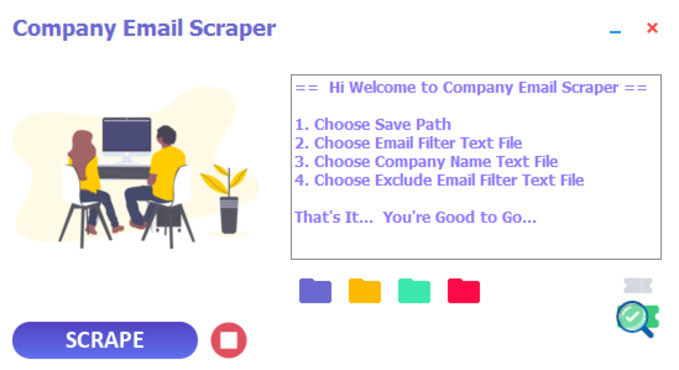Java -cp.;jsoup-1.7.3.jar Scraper Give it a go - it should scrape our table.html from the first part of the practical. The jsoup library (homepage) is beautifully written, and comes with a very clear cookbook of how to do stuff, along with detailed API docs. I need a Java webscraper for a class I'm taking. The webscraper needs to be able to recieve a URL and return all the specifics about the website (Item, price, etc). So far I haven't been able to find a code which is capable of doing so without Jsoup and I wanted to know if such a code even existed.
Apache Nutch is one of the most efficient and popular open source. Have a solid understanding of web scraping with Java Beeing able to scrape practically any web page (static AND dynamic / AJAX) though you learn the concepts behind web scraping Download, parse and extract data from websites with Jsoup Call web APIs in Java with Unirest. Extracting the title is not difficult, and you have many options, search here on Stack Overflow for ' Java HTML parsers '. One of them is Jsoup. You can navigate the page using DOM if you know the page structure, see It's a good library and I've used it in my last projects.
This post will walk through how to use the requests_html package to scrape options data from a JavaScript-rendered webpage. requests_html serves as an alternative to Selenium and PhantomJS, and provides a clear syntax similar to the awesome requests package. The code we’ll walk through is packaged into functions in the options module in the yahoo_fin package, but this article will show how to write the code from scratch using requests_html so that you can use the same idea to scrape other JavaScript-rendered webpages.
Note:
requests_html requires Python 3.6+. If you don’t have requests_html installed, you can download it using pip:


Motivation
Let’s say we want to scrape options data for a particular stock. As an example, let’s look at Netflix (since it’s well known). If we go to the below site, we can see the option chain information for the earliest upcoming options expiration date for Netflix:
On this webpage there’s a drop-down box allowing us to view data by other expiration dates. What if we want to get all the possible choices – i.e. all the possible expiration dates?
We can try using requests with BeautifulSoup, but that won’t work quite the way we want. To demonstrate, let’s try doing that to see what happens.
Running the above code shows us that option_tags is an empty list. This is because there are no option tags found in the HTML we scrapped from the webpage above. However, if we look at the source via a web browser, we can see that there are, indeed, option tags:
Why the disconnect? The reason why we see option tags when looking at the source code in a browser is that the browser is executing JavaScript code that renders that HTML i.e. it modifies the HTML of the page dynamically to allow a user to select one of the possible expiration dates. This means if we try just scraping the HTML, the JavaScript won’t be executed, and thus, we won’t see the tags containing the expiration dates. This brings us to requests_html.
Using requests_html to render JavaScript
Now, let’s use requests_html to run the JavaScript code in order to render the HTML we’re looking for.
Similar to the requests package, we can use a session object to get the webpage we need. This gets stored in a response variable, resp. If you print out resp you should see the message Response 200, which means the connection to the webpage was successful (otherwise you’ll get a different message).
Running resp.html will give us an object that allows us to print out, search through, and perform several functions on the webpage’s HTML. To simulate running the JavaScript code, we use the render method on the resp.html object. Note how we don’t need to set a variable equal to this rendered result i.e. running the below code:
stores the updated HTML as in attribute in resp.html. Specifically, we can access the rendered HTML like this:
So now resp.html.html contains the HTML we need containing the option tags. From here, we can parse out the expiration dates from these tags using the find method.
Similarly, if we wanted to search for other HTML tags we could just input whatever those are into the find Macintosh laptop prices. method e.g. anchor (a), paragraph (p), header tags (h1, h2, h3, etc.) and so on.
Alternatively, we could also use BeautifulSoup on the rendered HTML (see below). However, the awesome point here is that we can create the connection to this webpage, render its JavaScript, and parse out the resultant HTML all in one package!
Lastly, we could scrape this particular webpage directly with yahoo_fin, which provides functions that wrap around requests_html specifically for Yahoo Finance’s website.
Scraping options data for each expiration date
Java Web Scraper Tutorial
Once we have the expiration dates, we could proceed with scraping the data associated with each date. In this particular case, the pattern of the URL for each expiration date’s data requires the date be converted to Unix timestamp format. This can be done using the pandas package.
Similarly, we could scrape this data using yahoo_fin. In this case, we just input the ticker symbol, NFLX and associated expiration date into either get_calls or get_puts to obtain the calls and puts data, respectively.
Java Import Web Scraper
Note: here we don’t need to convert each date to a Unix timestamp as these functions will figure that out automatically from the input dates.
That’s it for this post! To learn more about requests-html, check out my web scraping course on Udemy here!
Java Web Scraper Tutorial
To see the official documentation for requests_html, click here.
Java Web Scraper
Related
